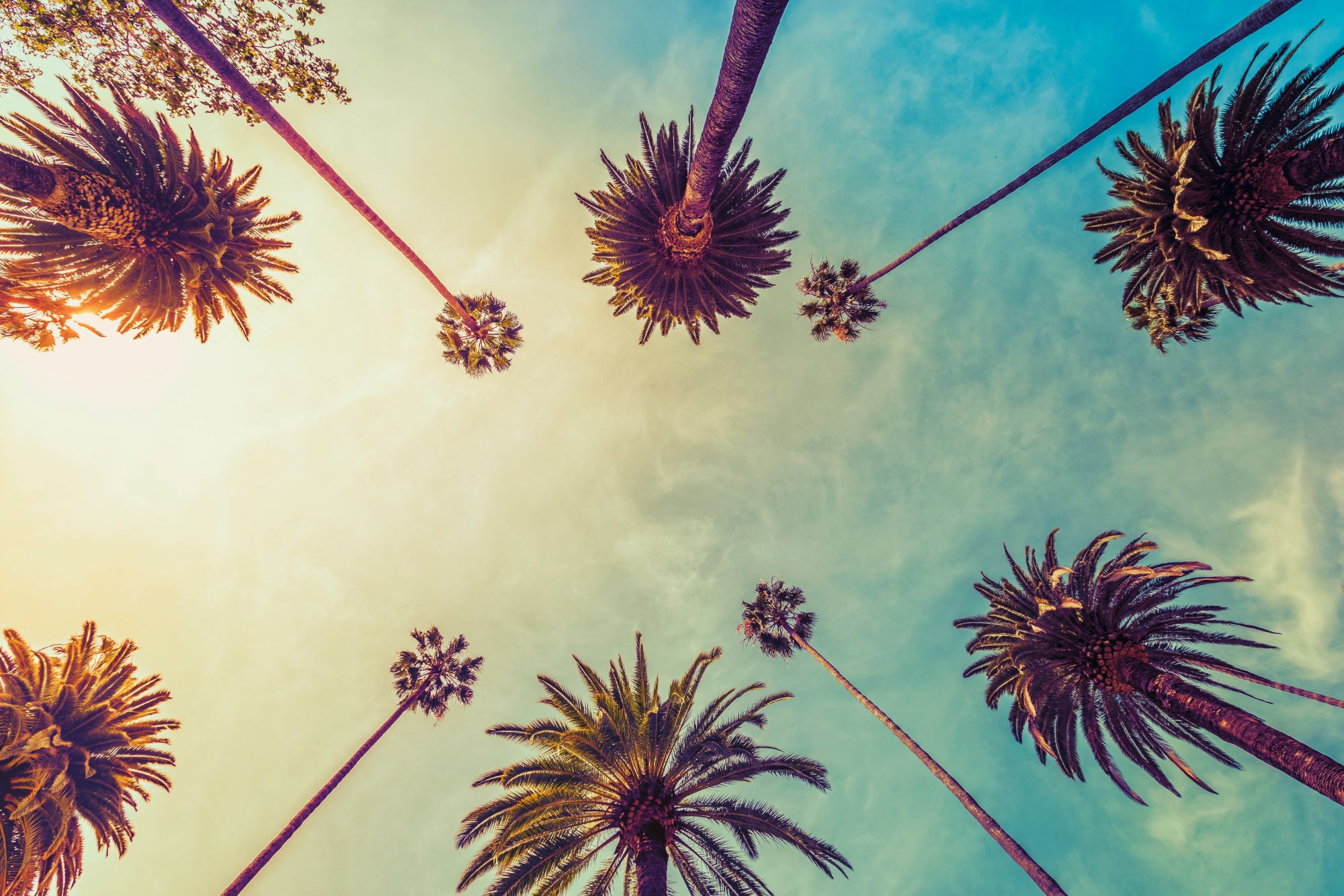From its inception in the early 1900s, Beverly Hills has championed the significance of trees in creating an atmosphere of dignity and beauty. The visionary master plan by landscape architect Wilbur David Cook, Jr., divided the city into the iconic ‘Hills,’ ‘Flats,’ and ‘South,’ a design that continues to shape the city’s landscape today.

Photo Courtesy Beverly Hills Historical Society
Over the years, the city’s commitment to a thriving urban forest has been evident, with the implementation of the Street Tree Master Plan in 1996. This plan focused on replacing aging American elm and Arizona ash trees, setting the stage for thoughtful tree management initiatives. Beverly Hills has become renowned for its large, healthy trees and high canopy cover, creating a unique urban environment.
As the city embraces its 120-year history of urban forestry, it faces the challenges posed by climate change. The iconic tree species that have long defined Beverly Hills – such as magnolias and camphor – are now at risk due to changing climate conditions. To address this, the Beverly Hills Urban Forest Management Plan (UFMP) introduces a carefully curated list of recommended tree species, ensuring a sustainable and regionally appropriate canopy. A few of the recommendations include:
Queen Palm (Syagrus romanzoffiana):
Standing tall and majestic along Hamilton Drive, the Queen Palm graces Beverly Hills with its iconic feather-like fronds, creating a tropical oasis in the heart of the city. Known for its slender trunk and gracefully arching fronds, the Queen Palm adds a touch of regal elegance to the streetscape.

Beverly Hills. Photo Courtesy Adobe Stock.
Adapted to warmer climates, the Queen Palm is a perfect choice for Beverly Hills, where its vibrant green fronds create a striking contrast against the blue sky. Its symmetrical crown and minimal maintenance requirements make it a favorite for landscaping, enhancing the city’s commitment to a resilient and visually appealing urban forest.
Chinese Elm (Ulmus parvifolia):
For locations like South Almont Drive, El Camino Drive, and North Elm Drive (500 – 800), the Chinese Elm offers not only shade but also a graceful aesthetic with its small, deciduous leaves and attractive bark. Its adaptability to various climates makes it an ideal choice for maintaining the city’s character.
Chinese Flame Tree (Koelreuteria bipinnata):
Graceful and vibrant, the Chinese Flame Tree takes center stage on Beverly Green Drive, South Camden Drive, Hillgreen Drive, and Swall Drive. Its clusters of yellow flowers in the summer add a burst of color to the urban landscape.
Raywood Ash (Fraxinus oxycarpa ‘Raywood’):
Selected for South Clark Drive, North Linden Drive, Le Doux Road, and North Rexford Drive, the Raywood Ash provides not only a high canopy but also stunning autumn foliage, turning rich shades of red and purple, enhancing the city’s visual appeal.
Southern Magnolia (Magnolia grandiflora):
Gale Drive boasts the Southern Magnolia, known for its large, fragrant flowers and glossy, dark green leaves. This species not only enhances the visual aesthetics but also contributes to the city’s rich biodiversity.
As Beverly Hills faces the prospect of increasing temperatures, the UFMP’s phased approach to replacing vulnerable tree species ensures the preservation of beauty and functionality. These carefully selected species, including the Queen Palm, which Beverly Hills is known for, not only contribute to a resilient urban forest but also stand as symbols of the city’s dedication to creating a vibrant and aesthetically pleasing environment.
